

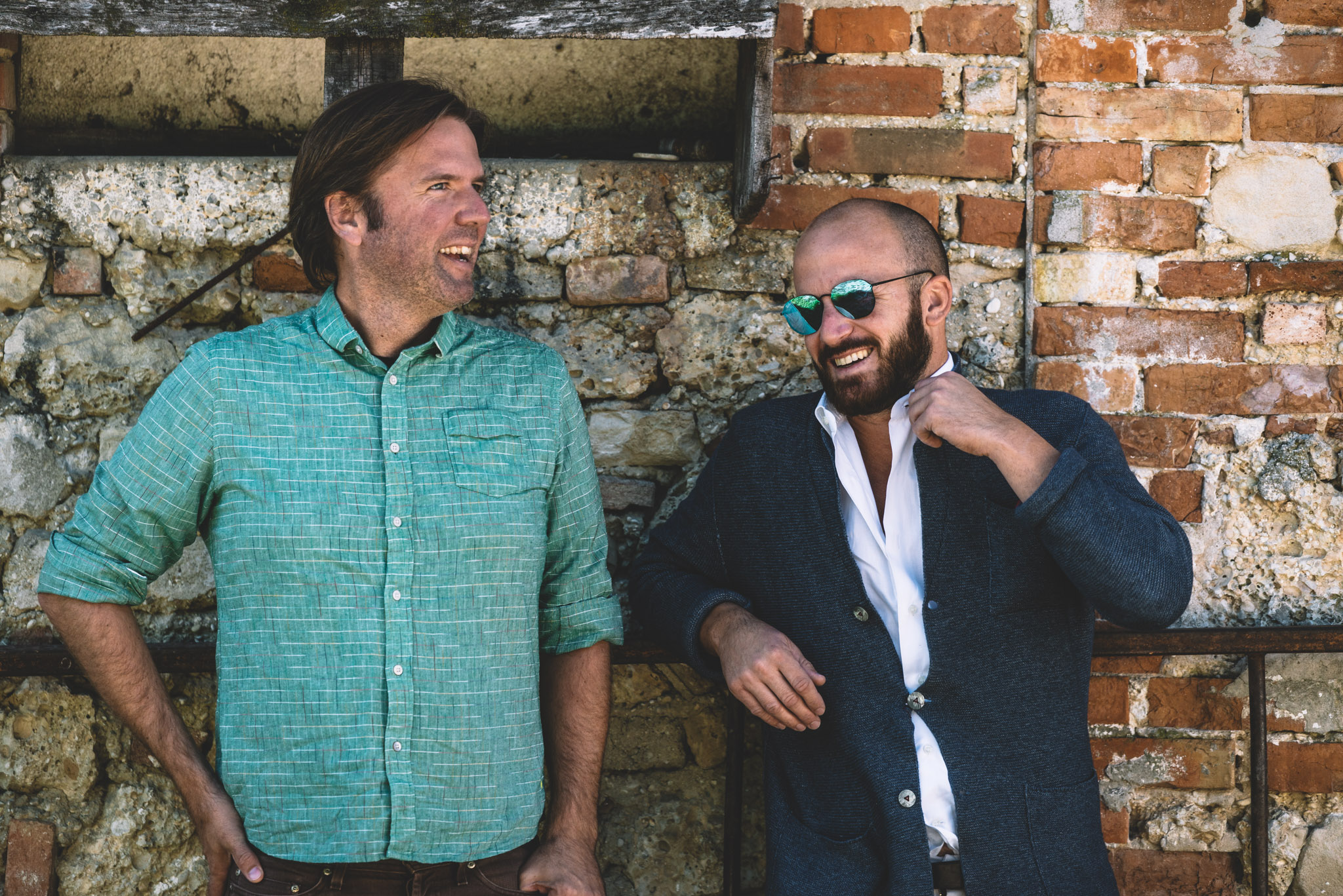
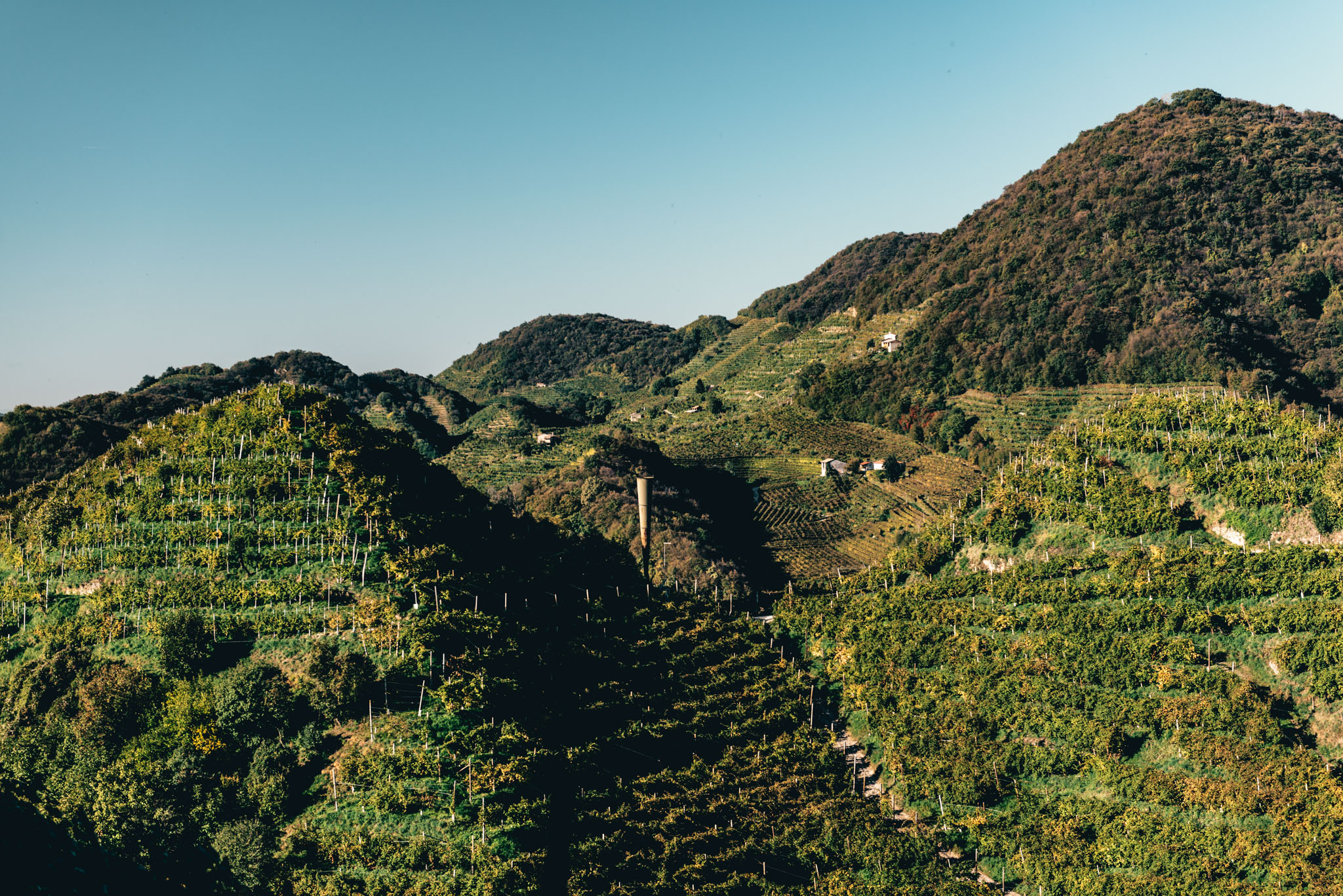


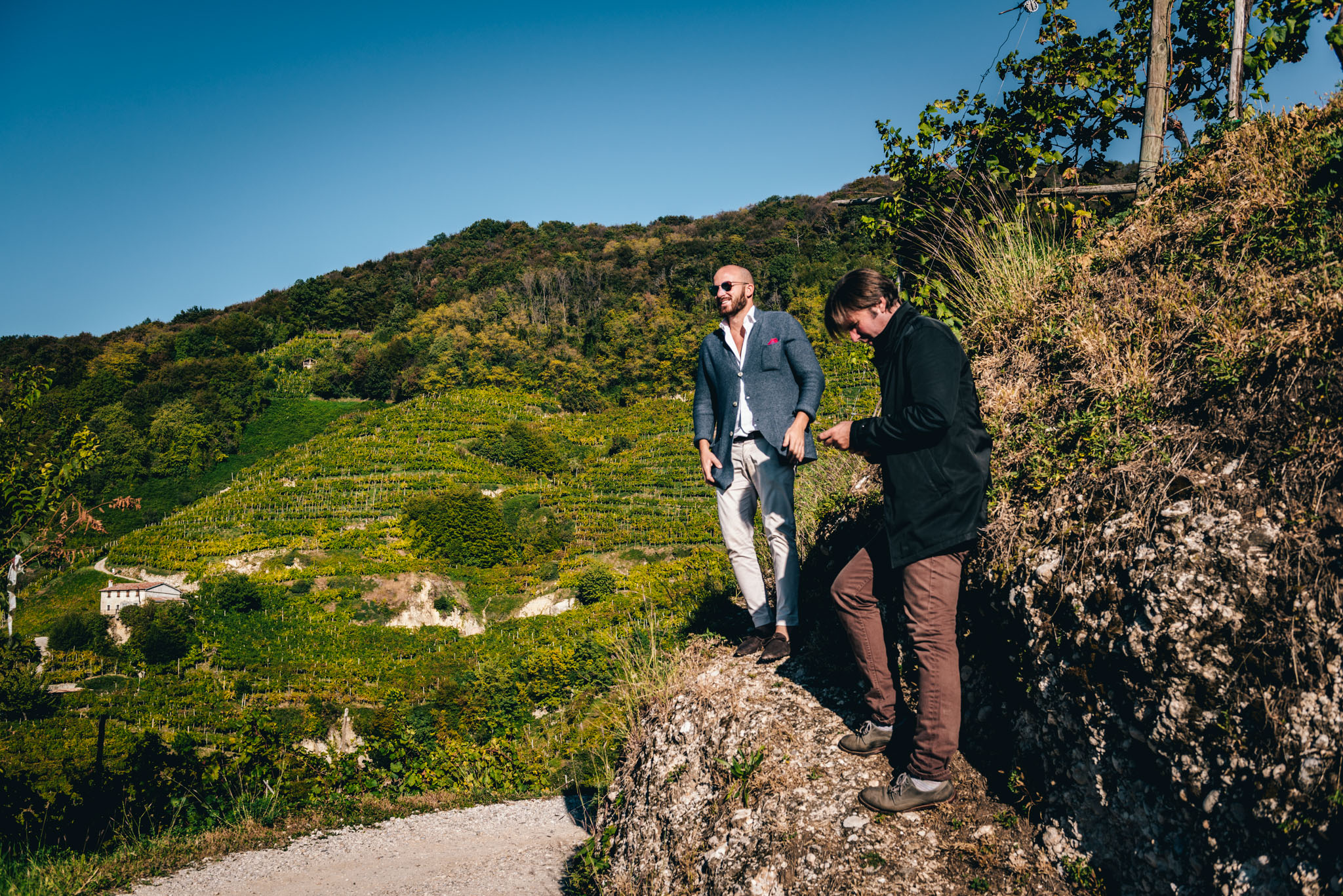
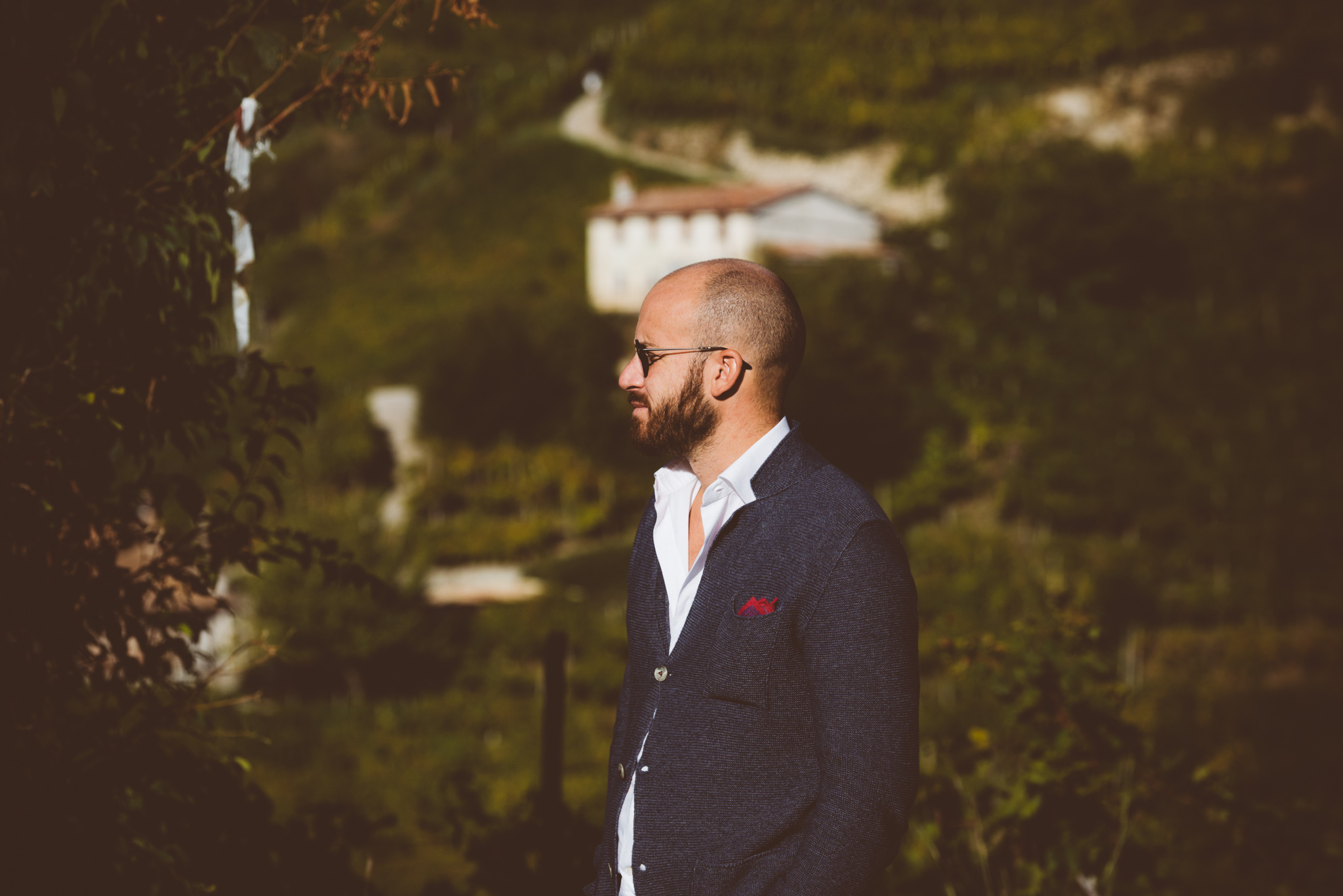
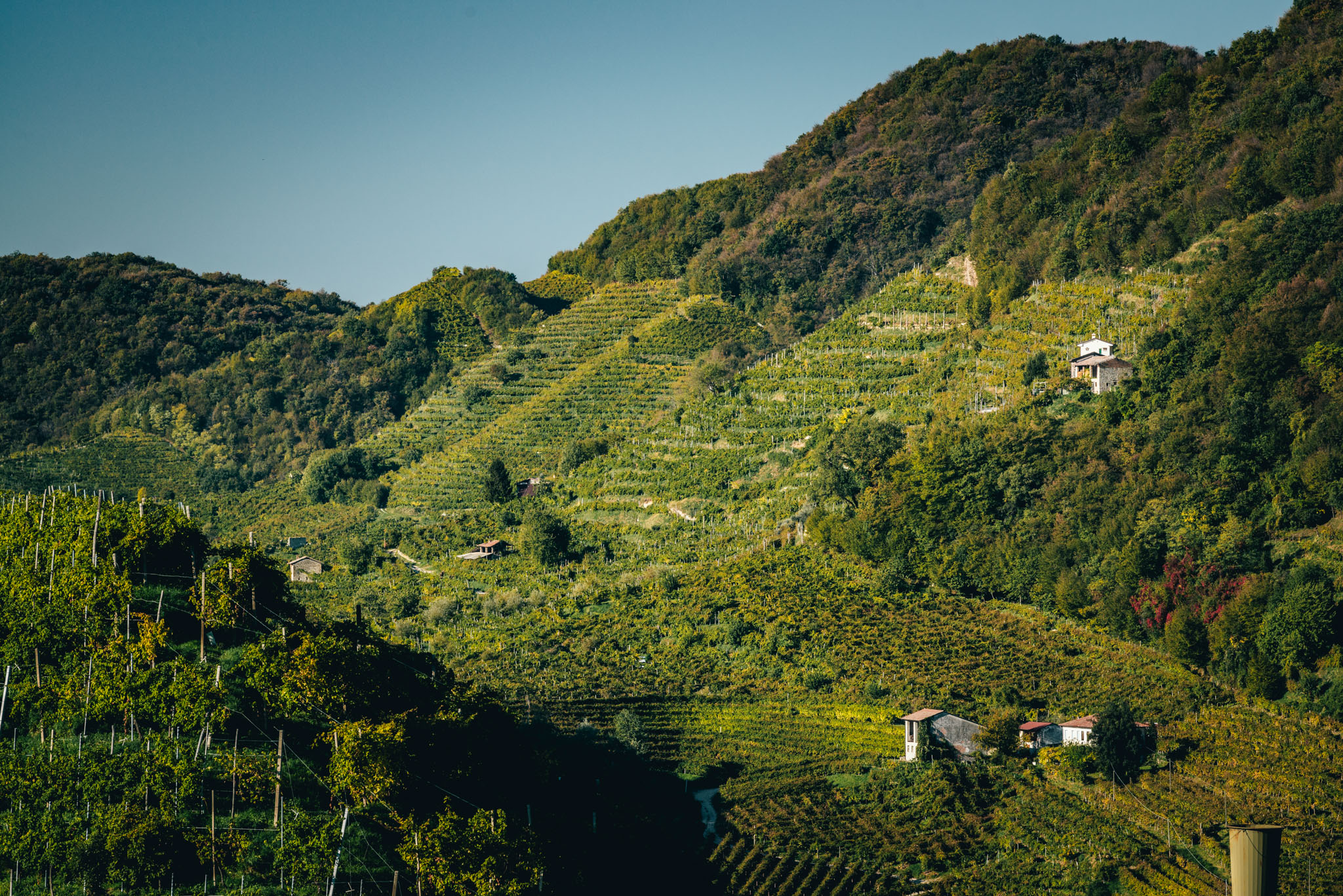
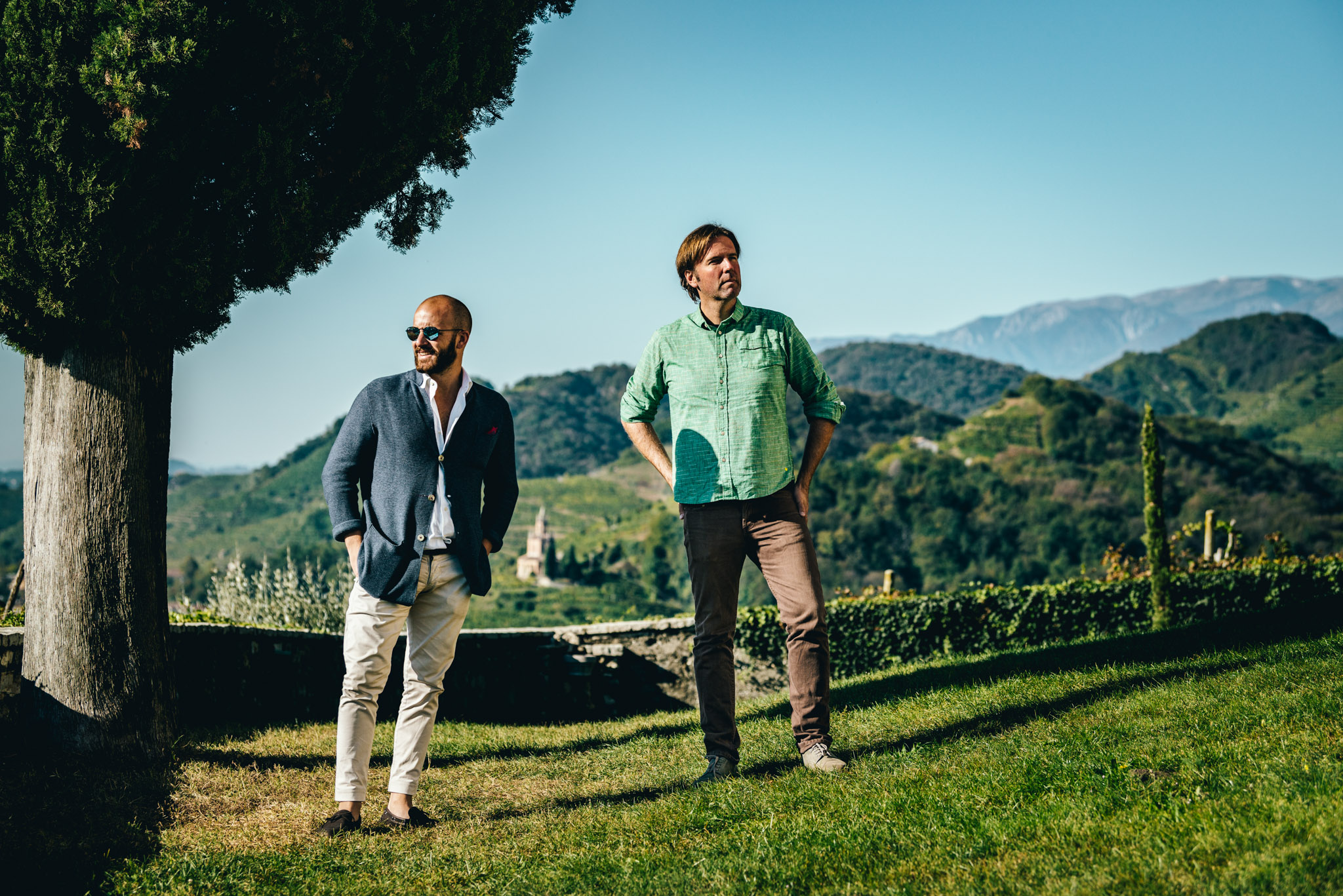

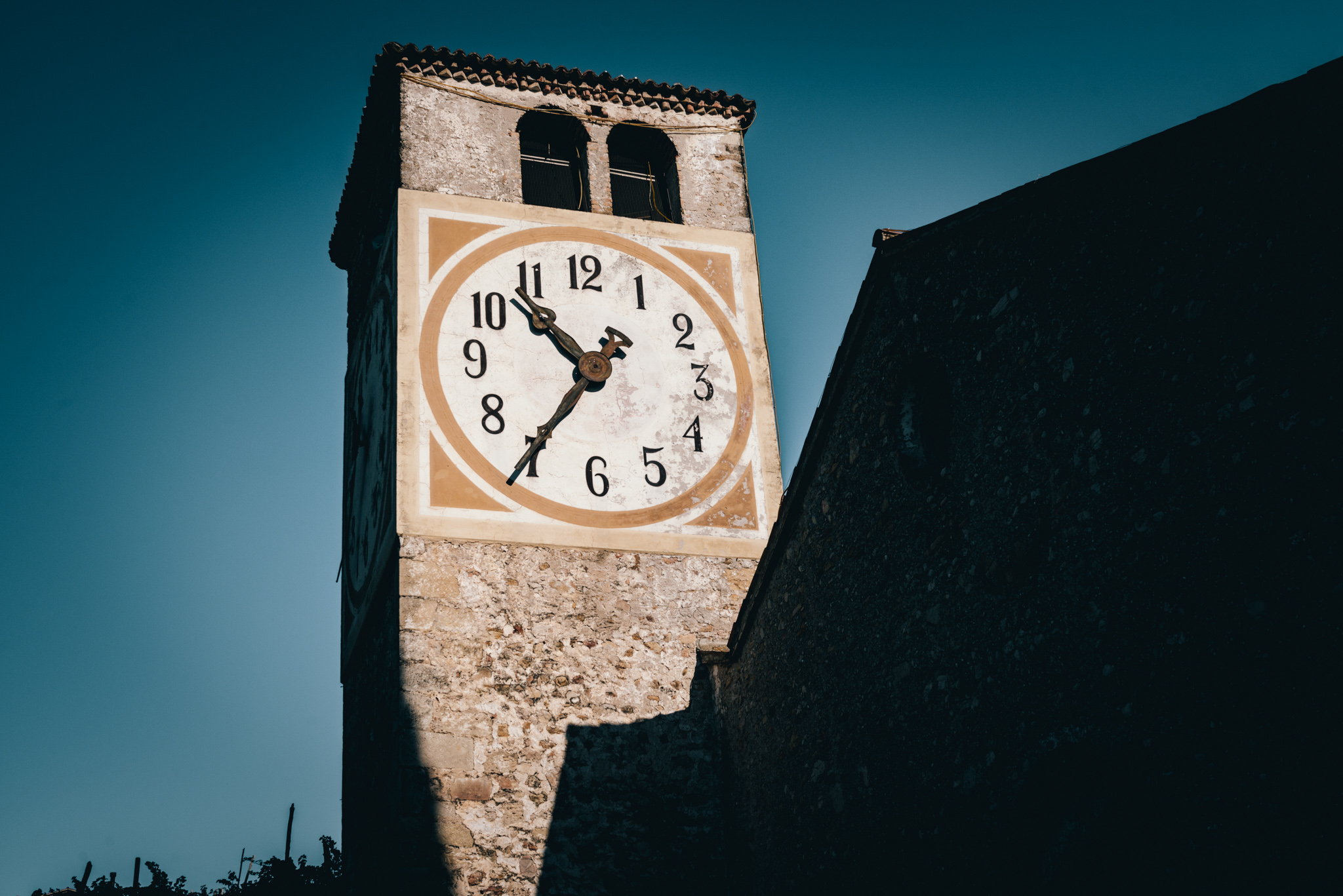
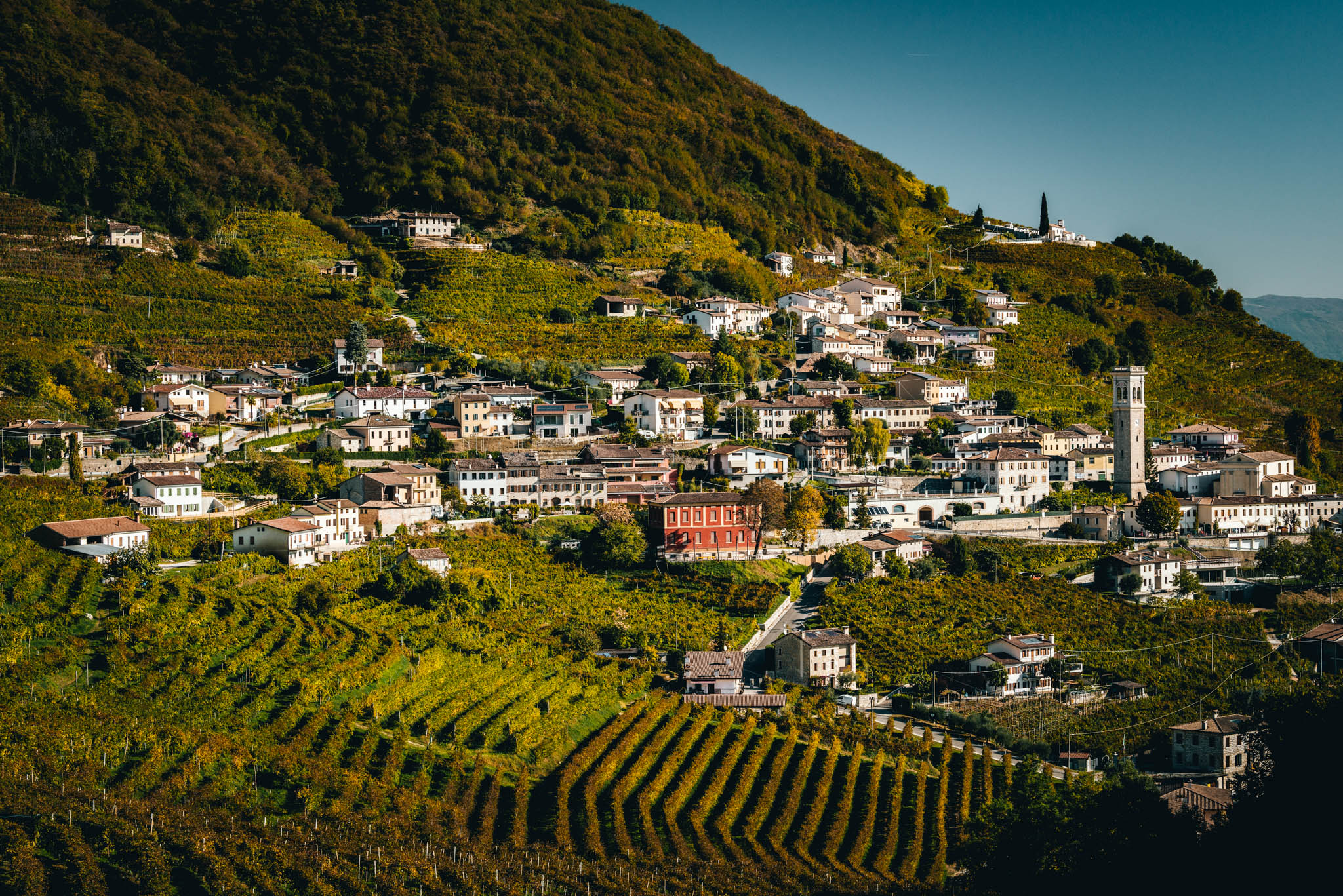
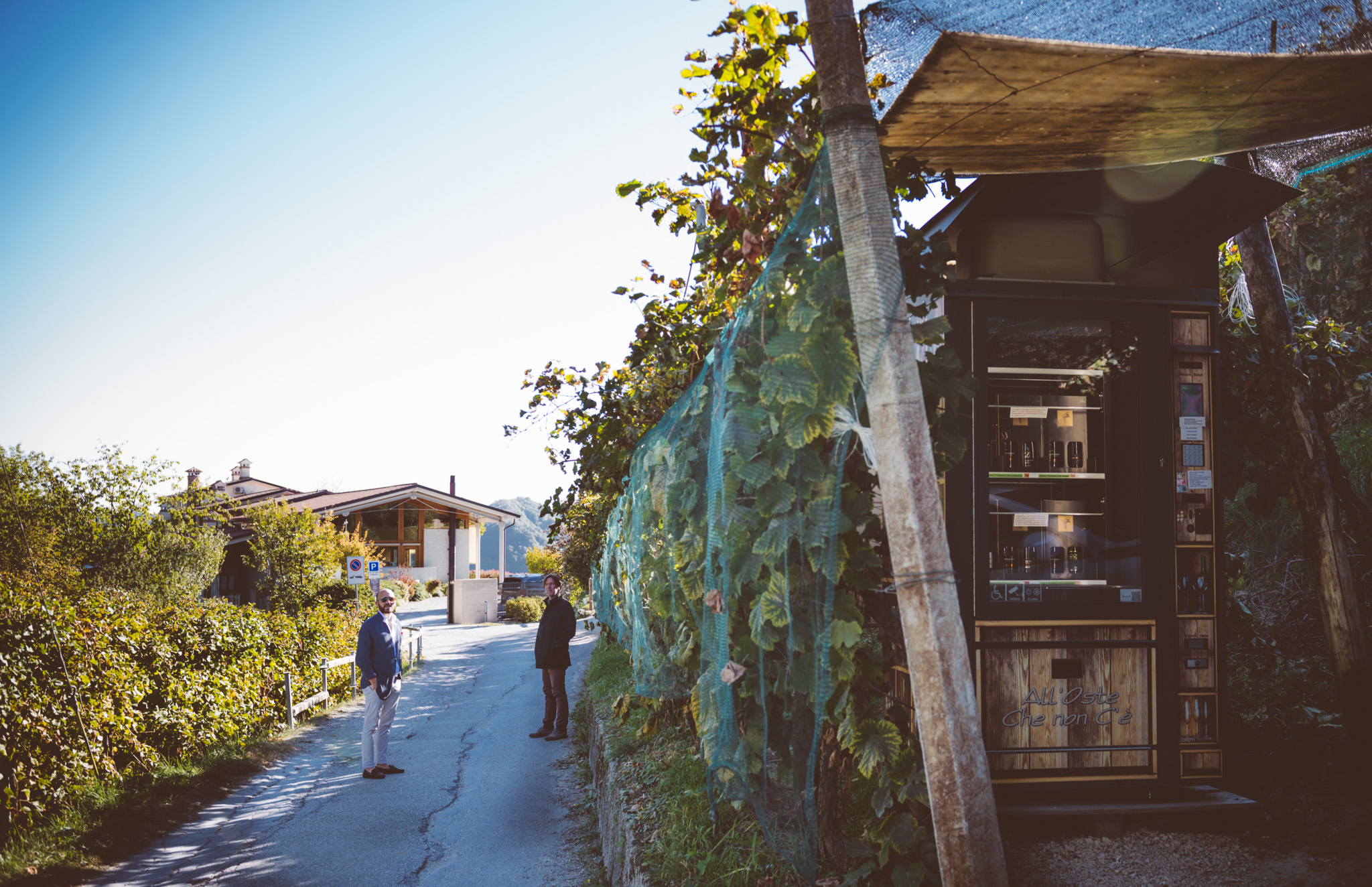

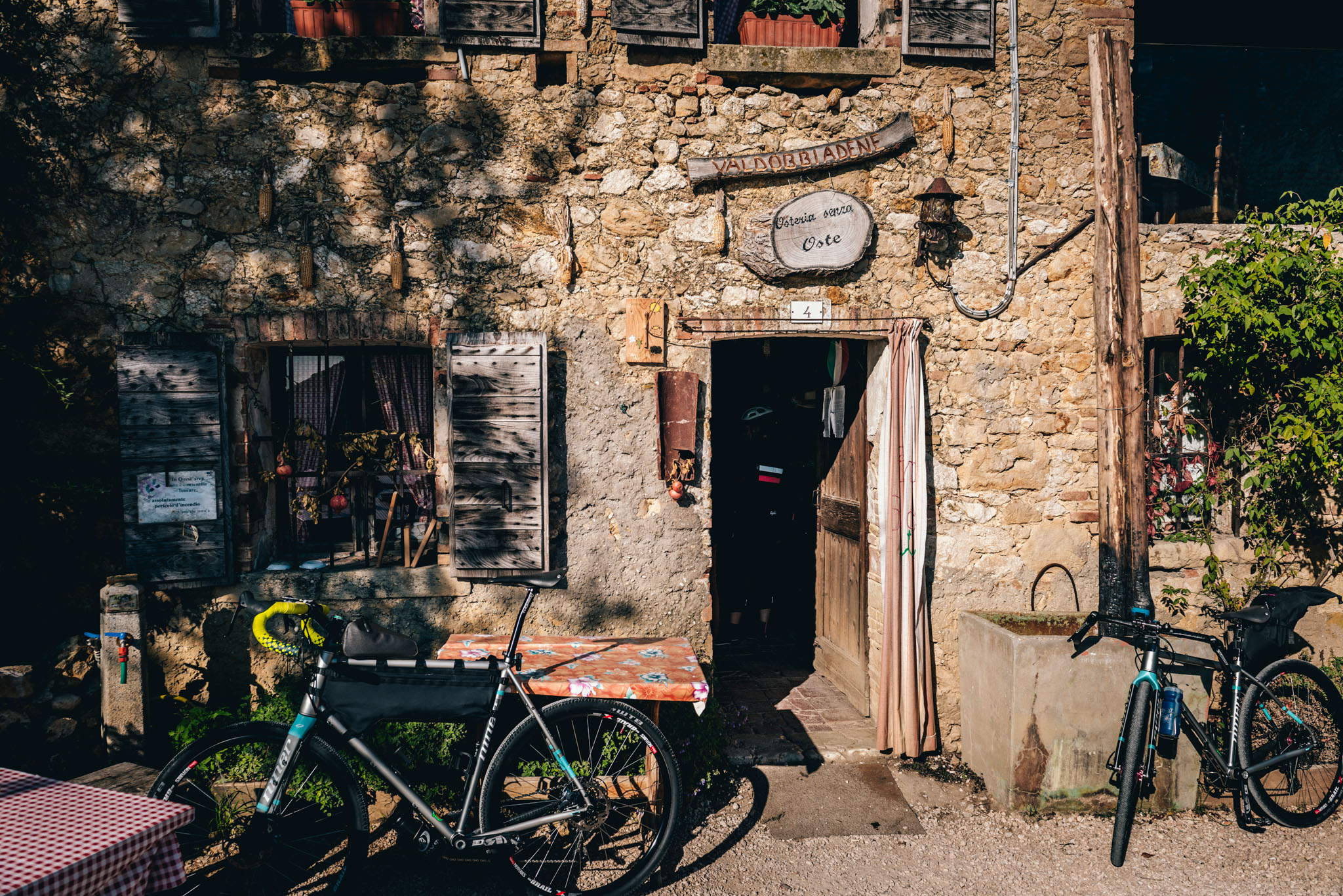
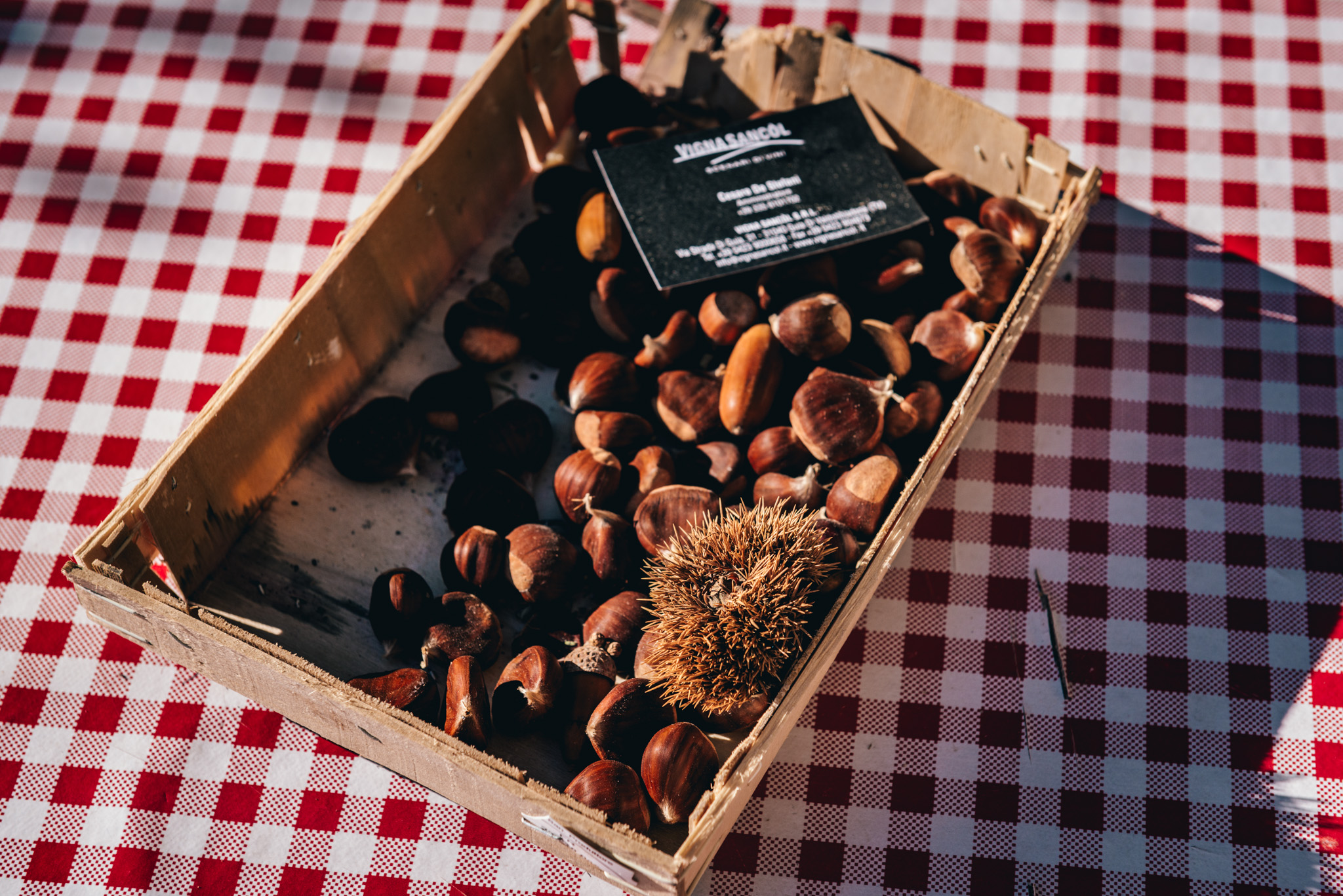
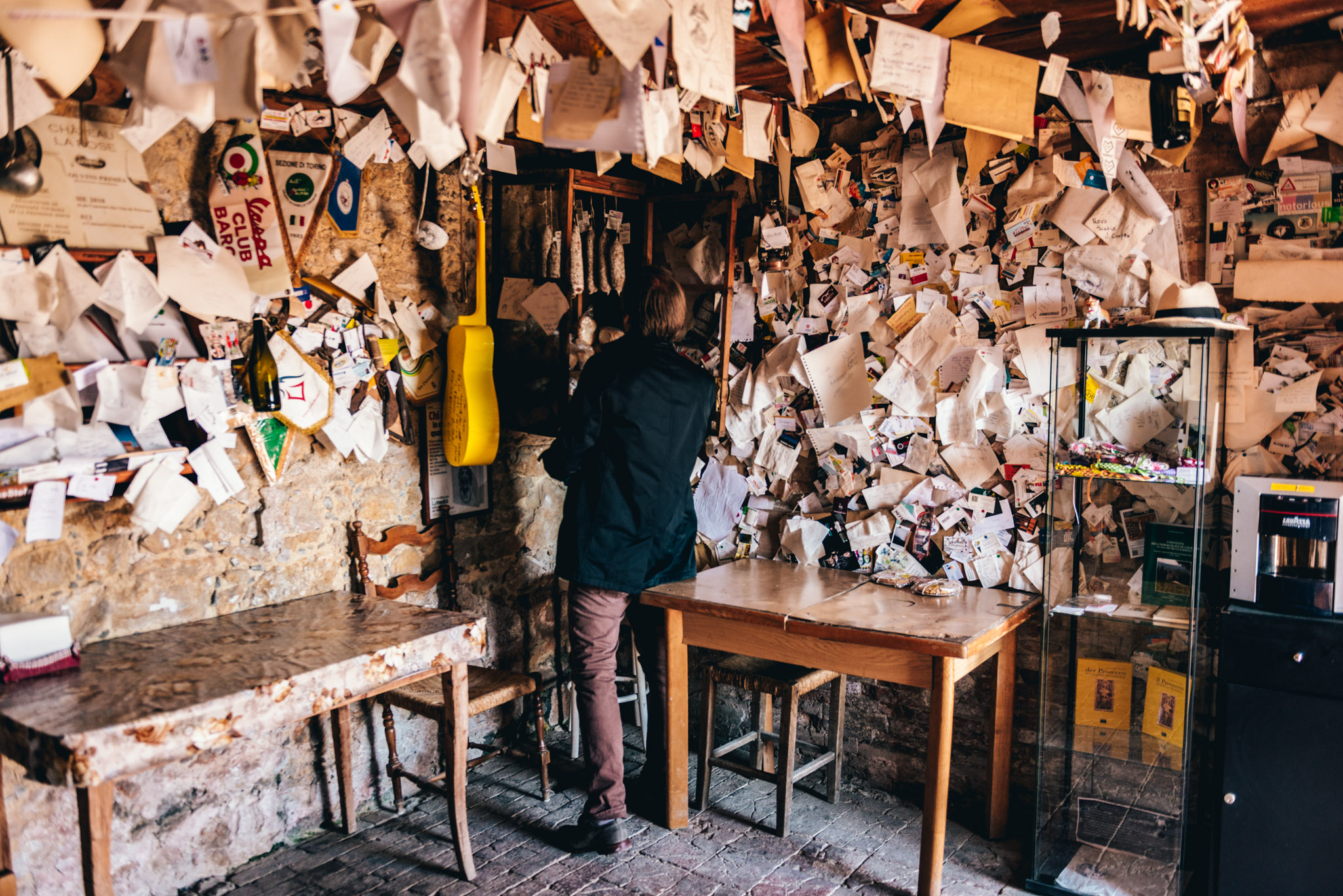
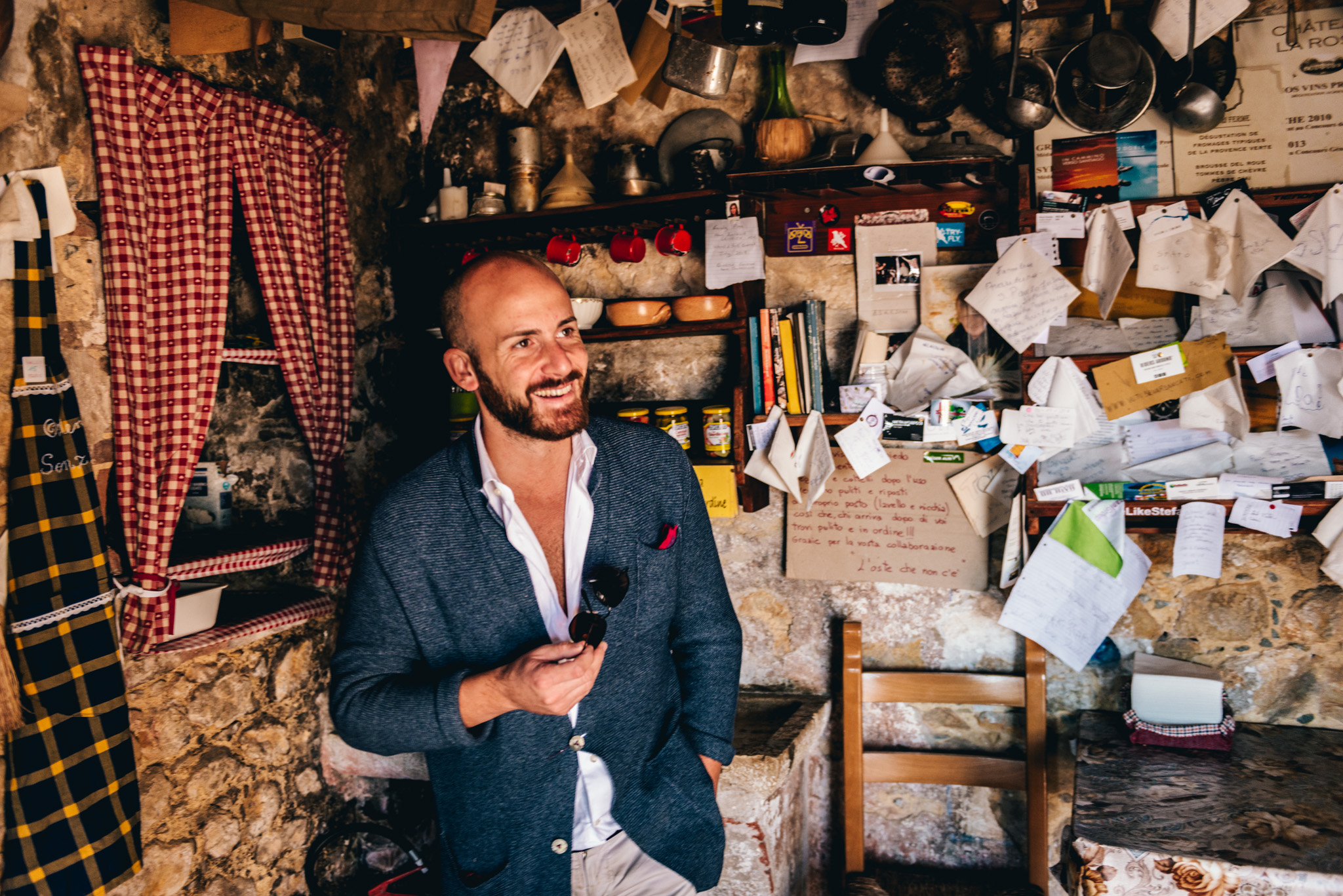
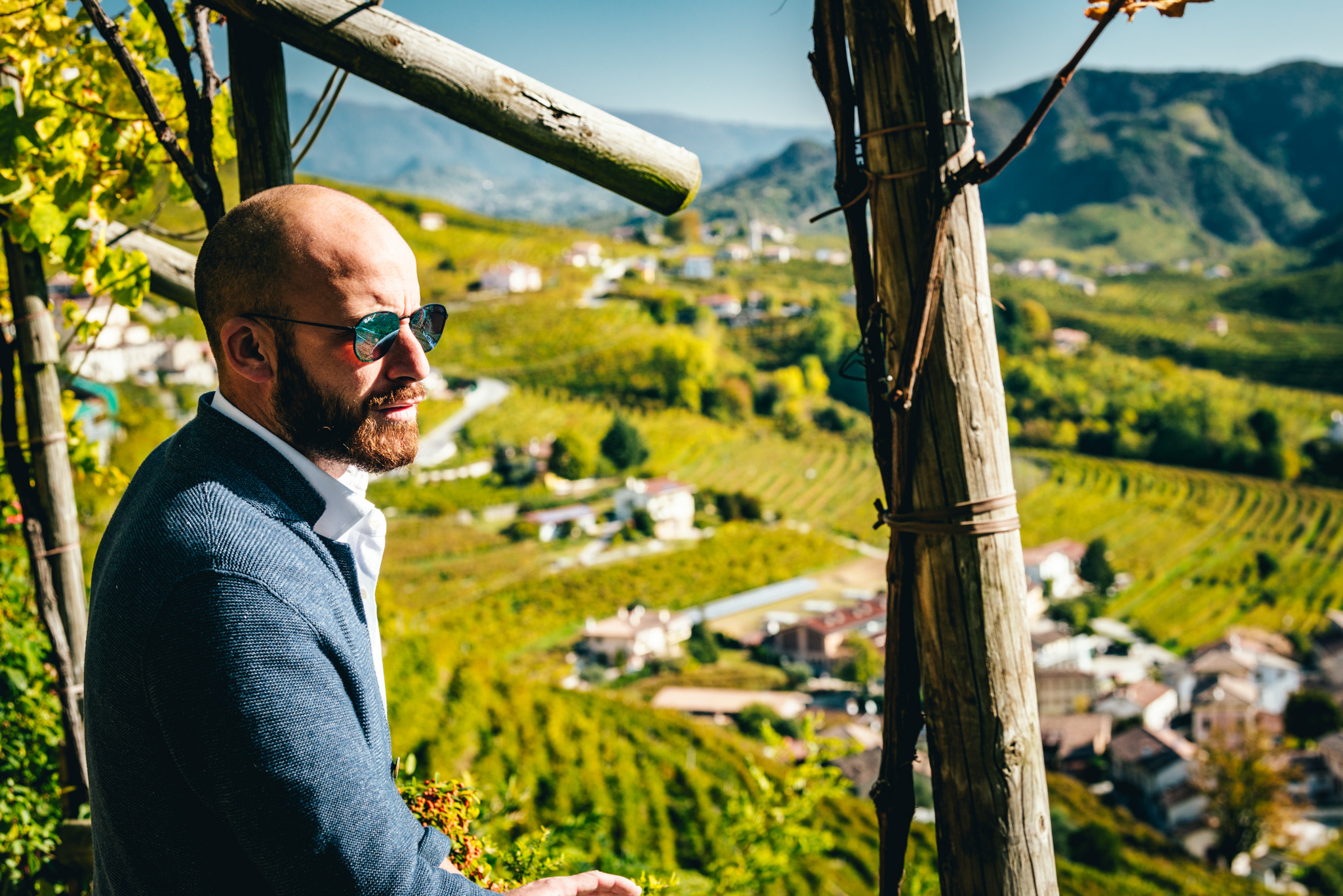

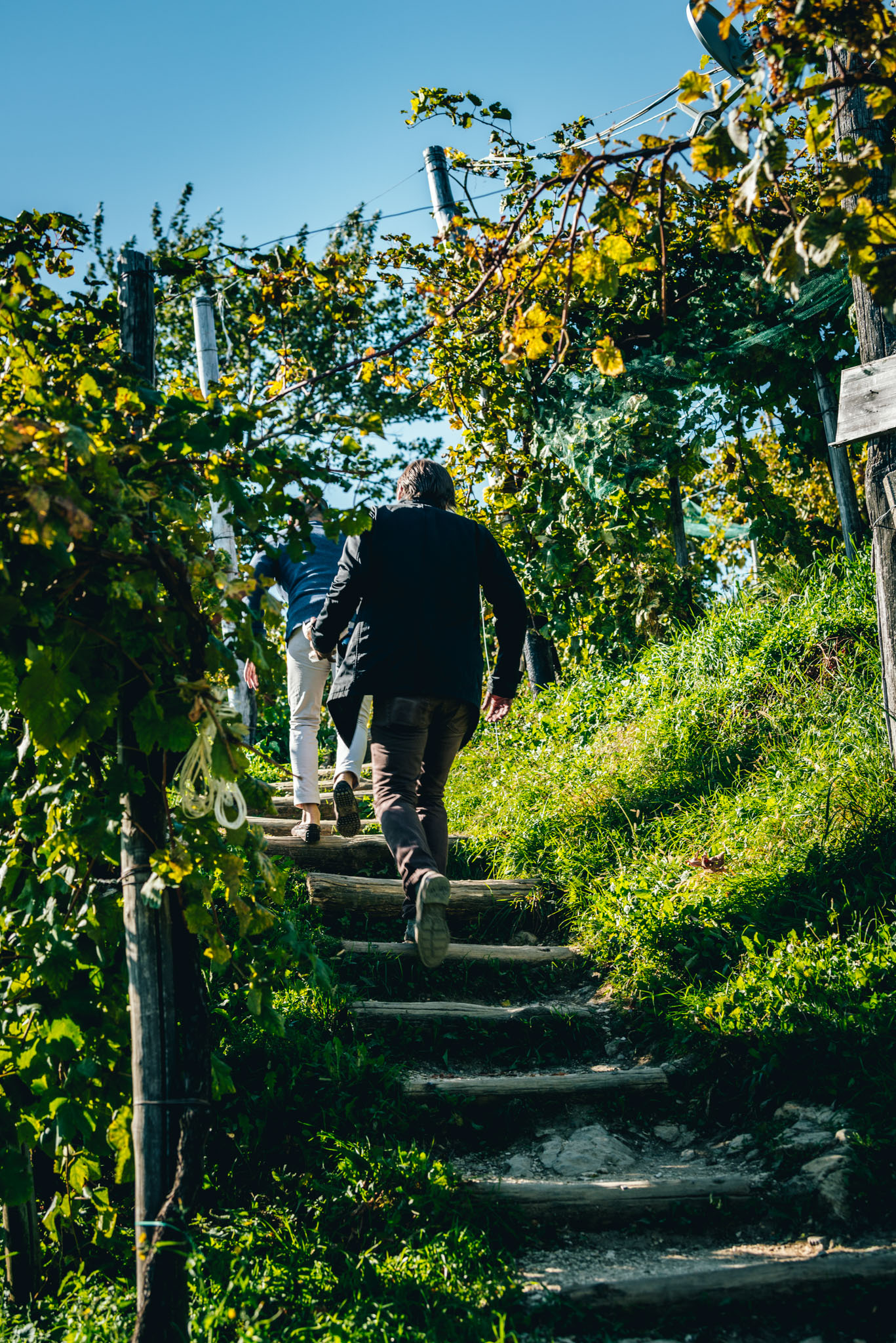
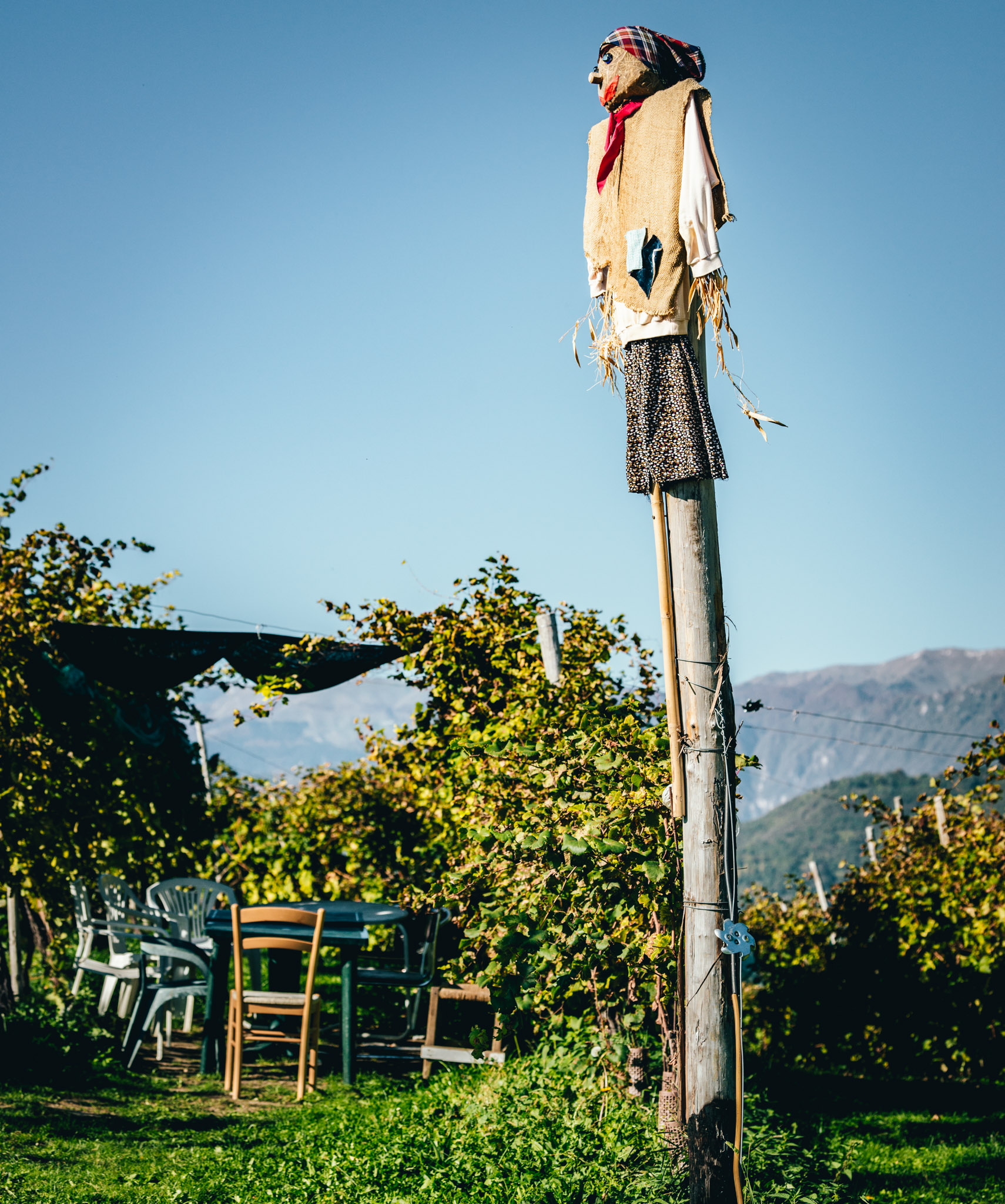
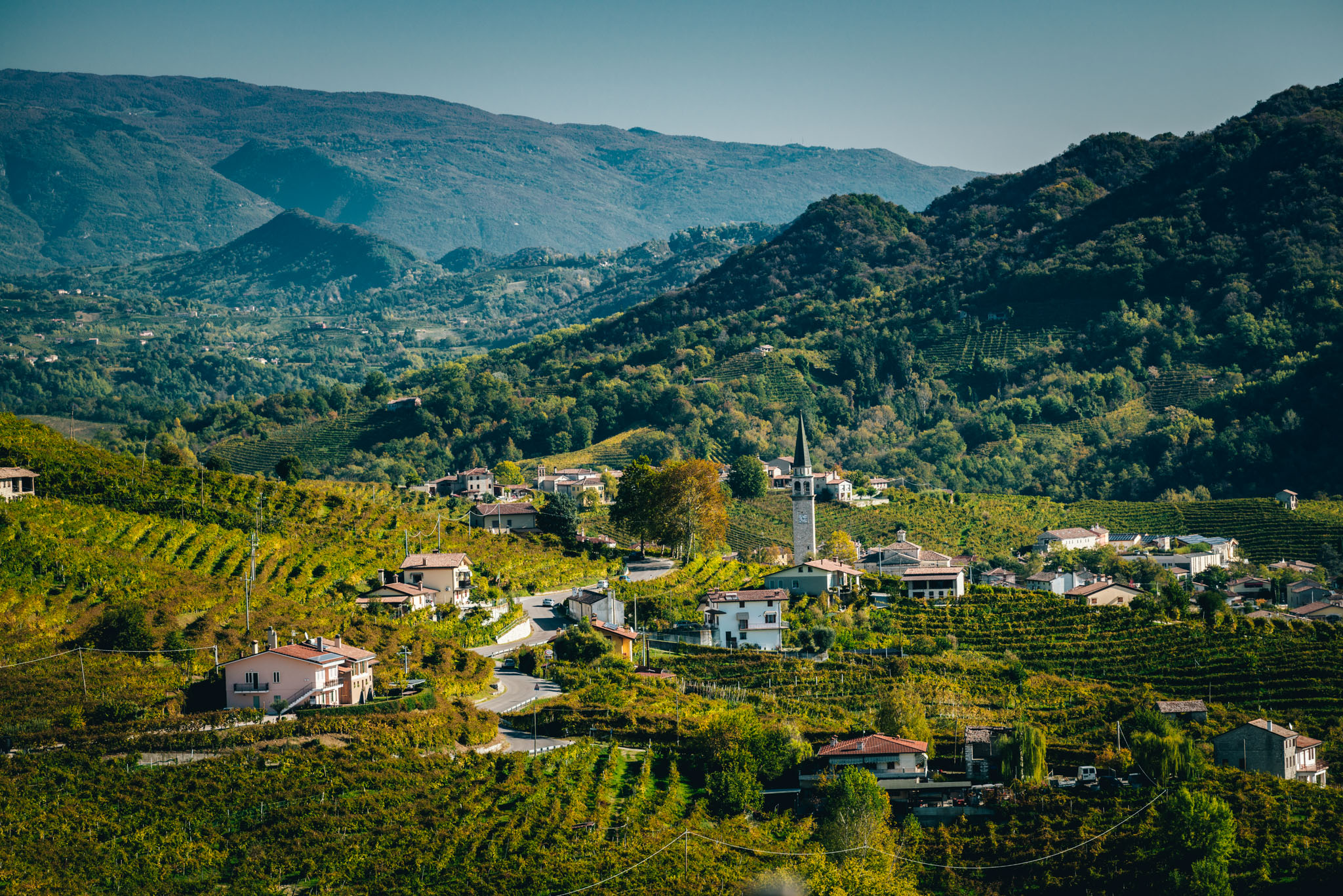
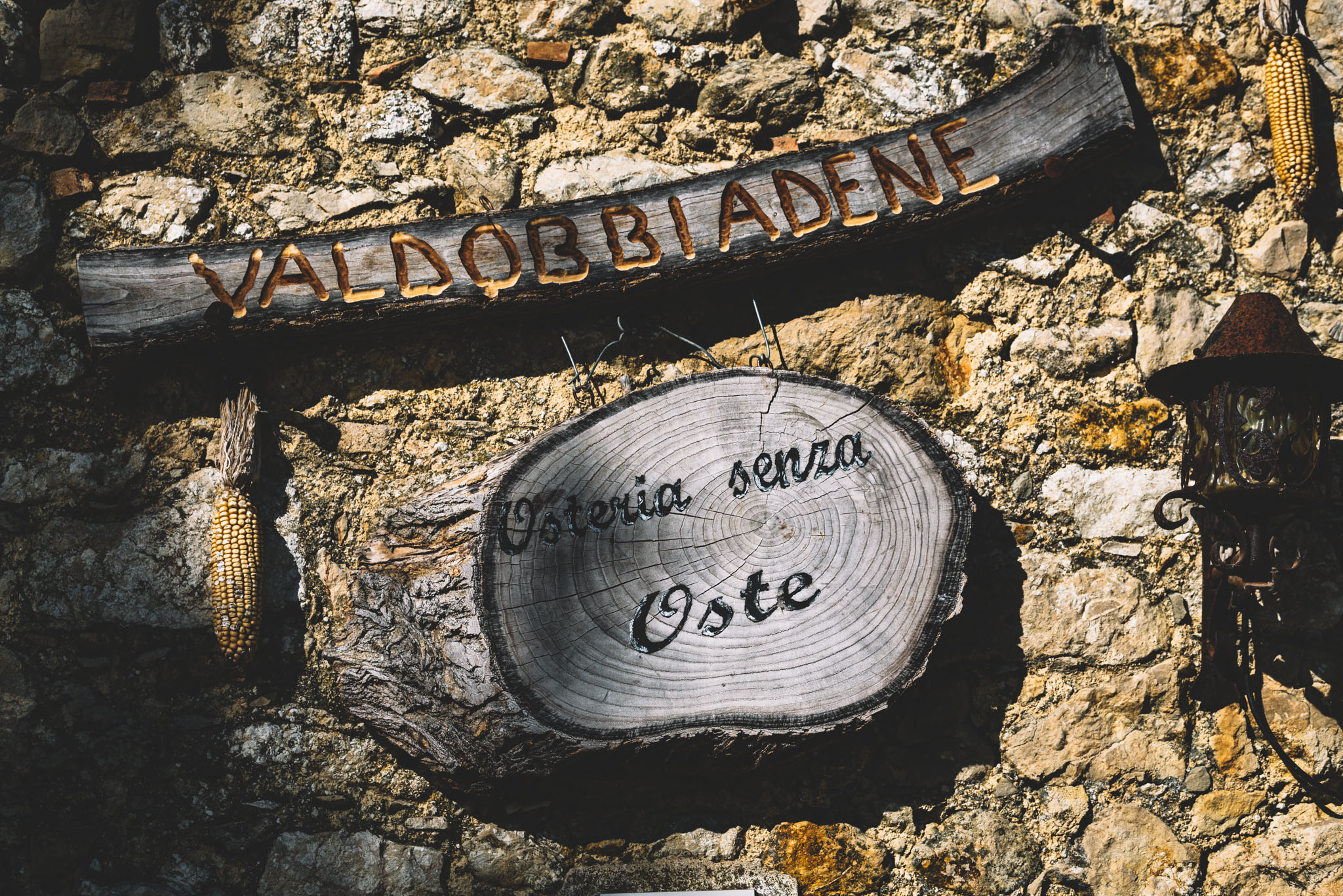

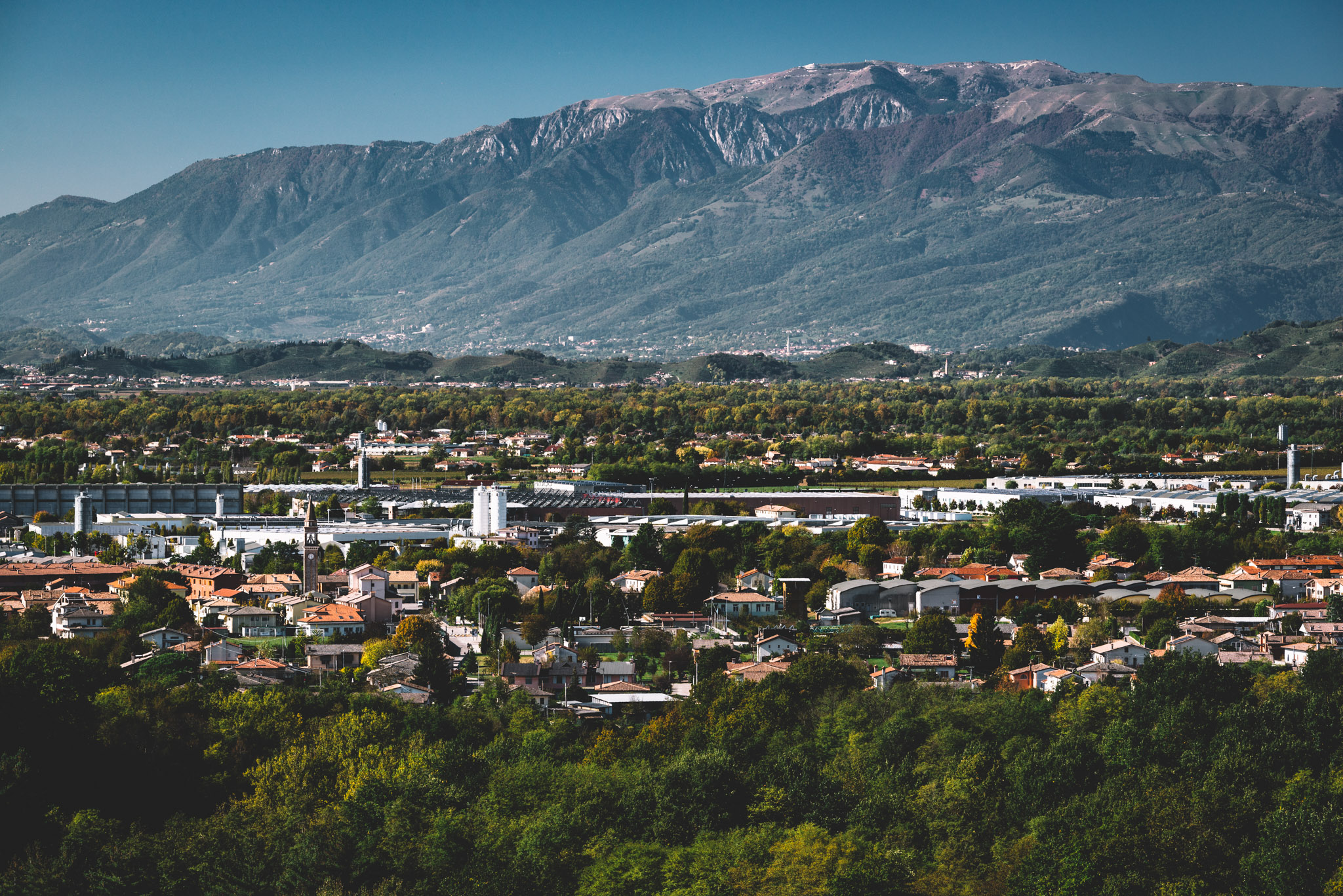

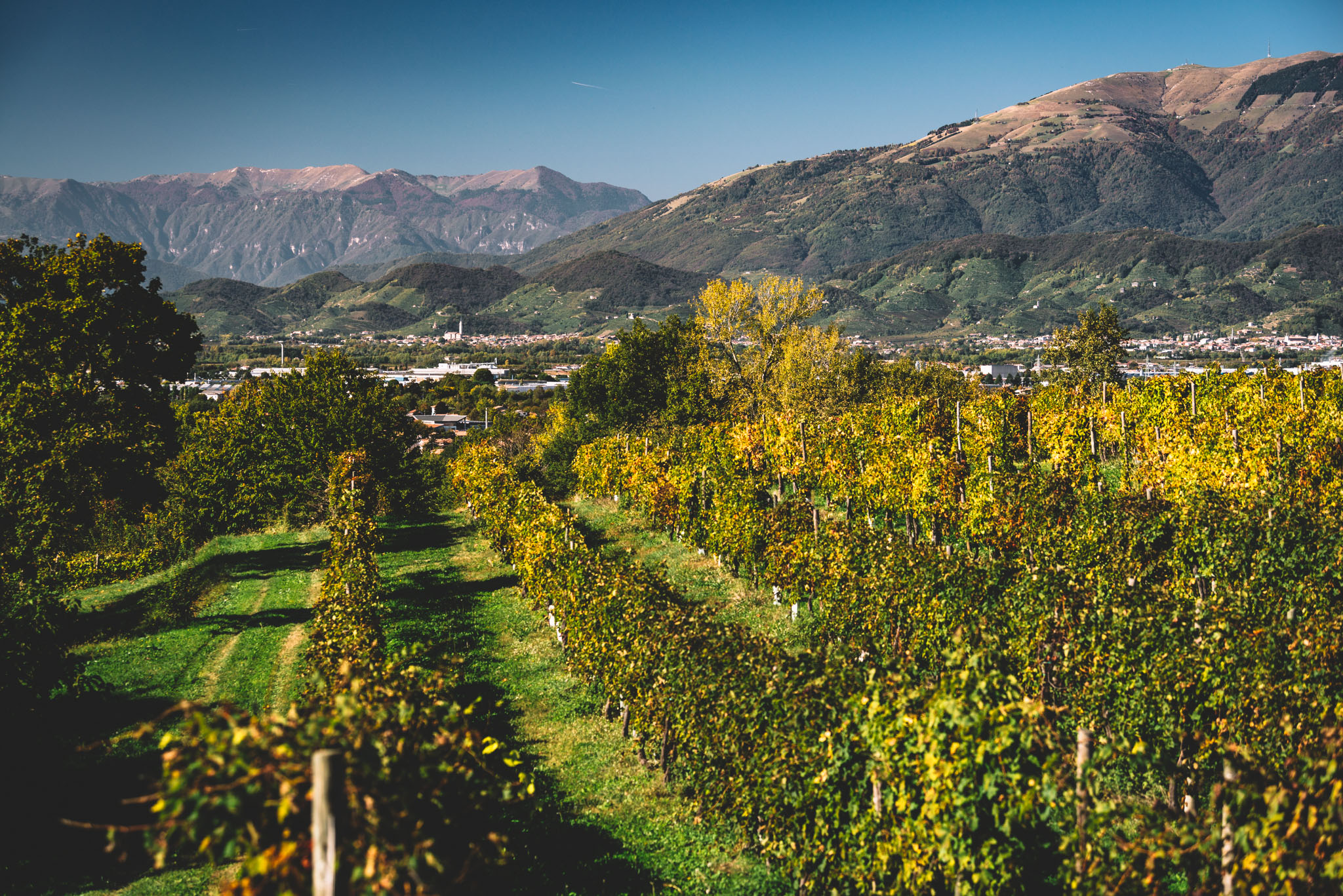
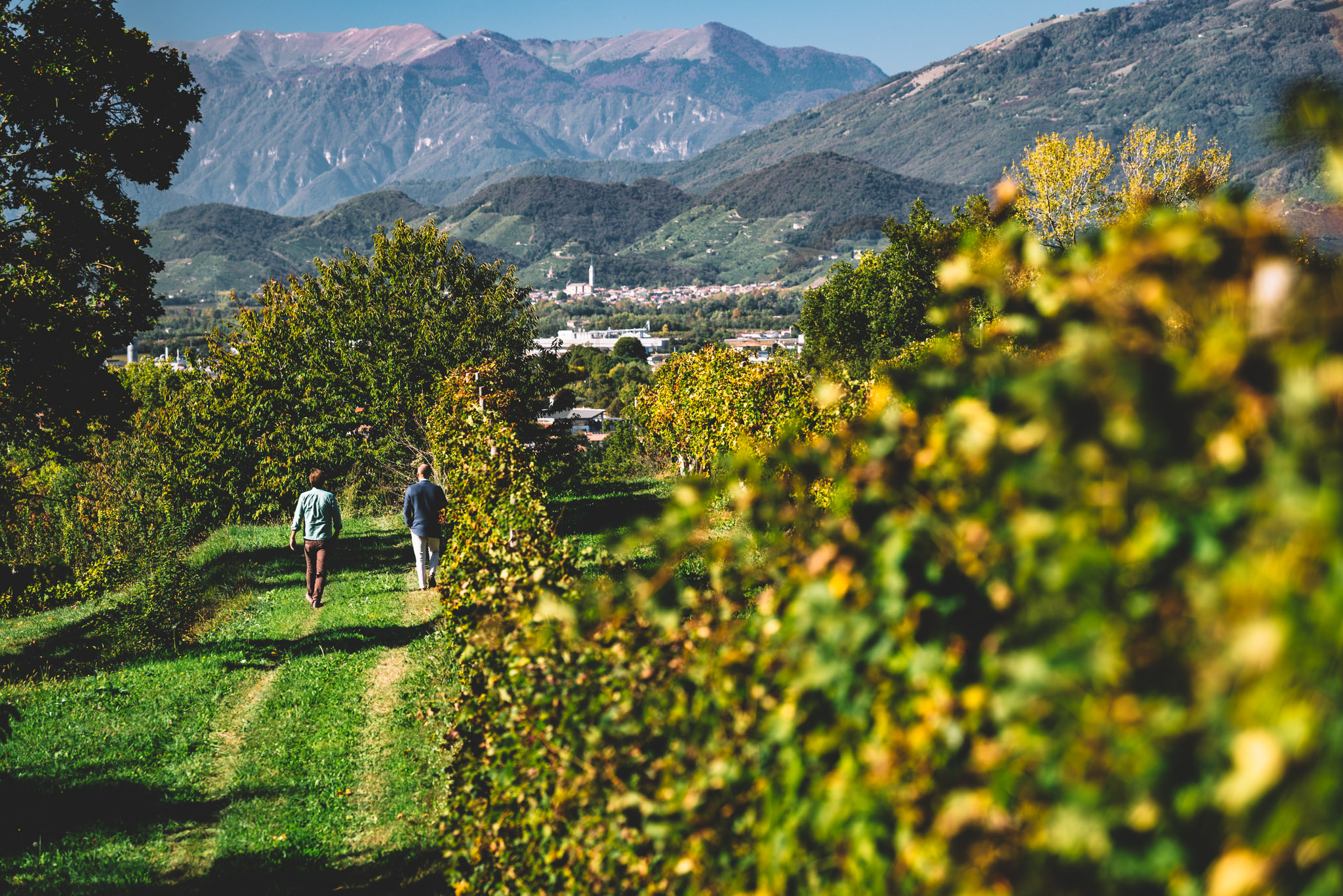
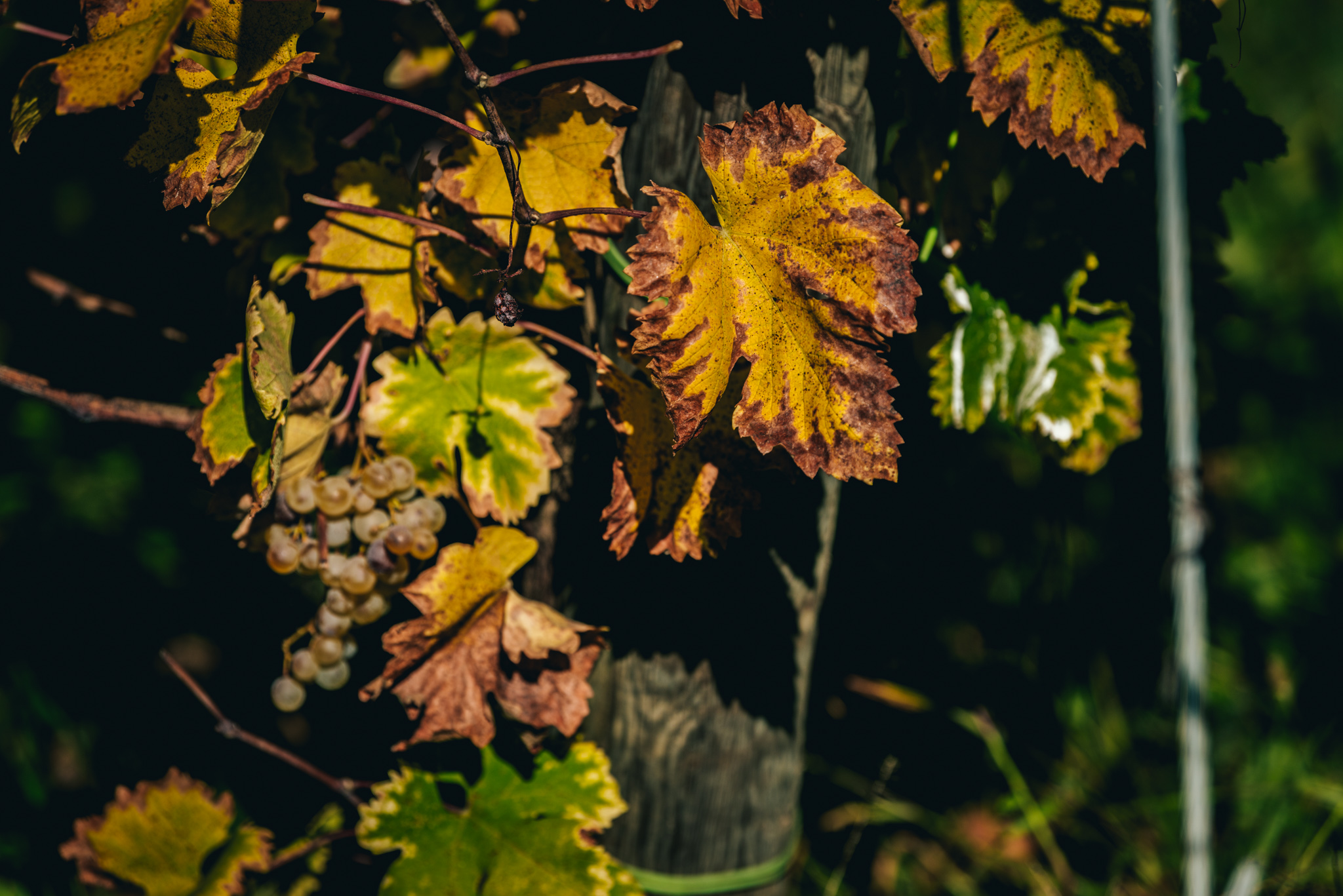
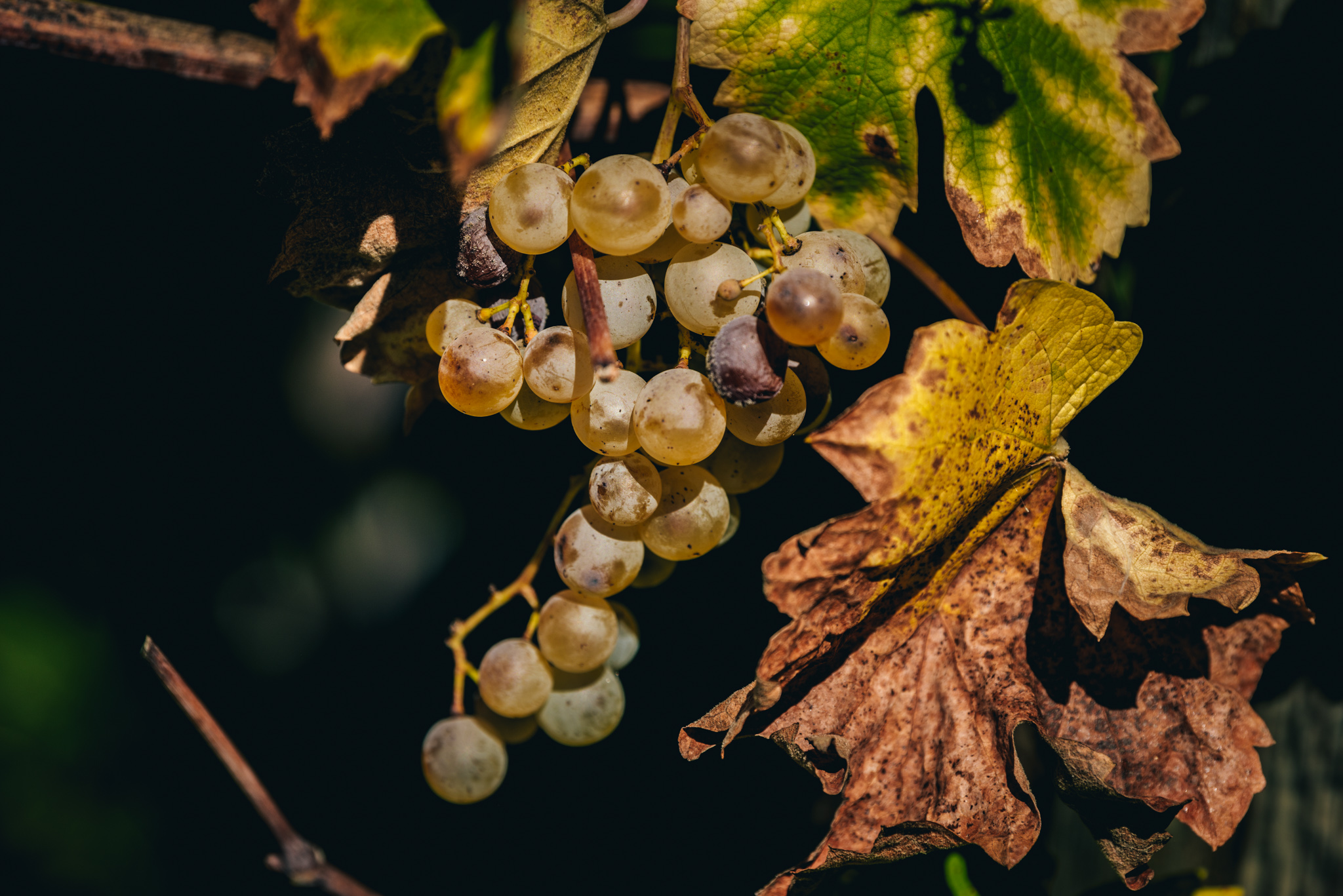
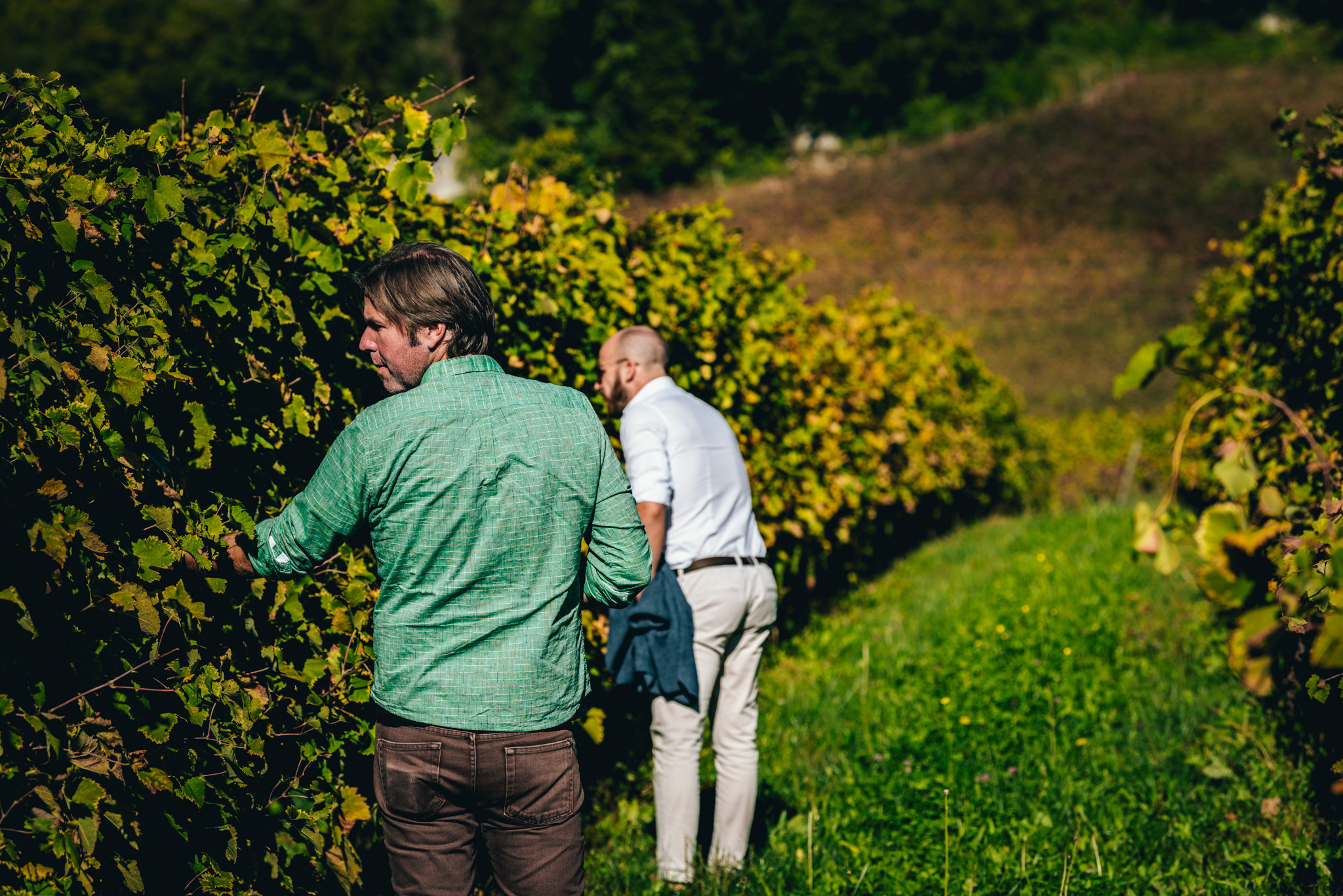
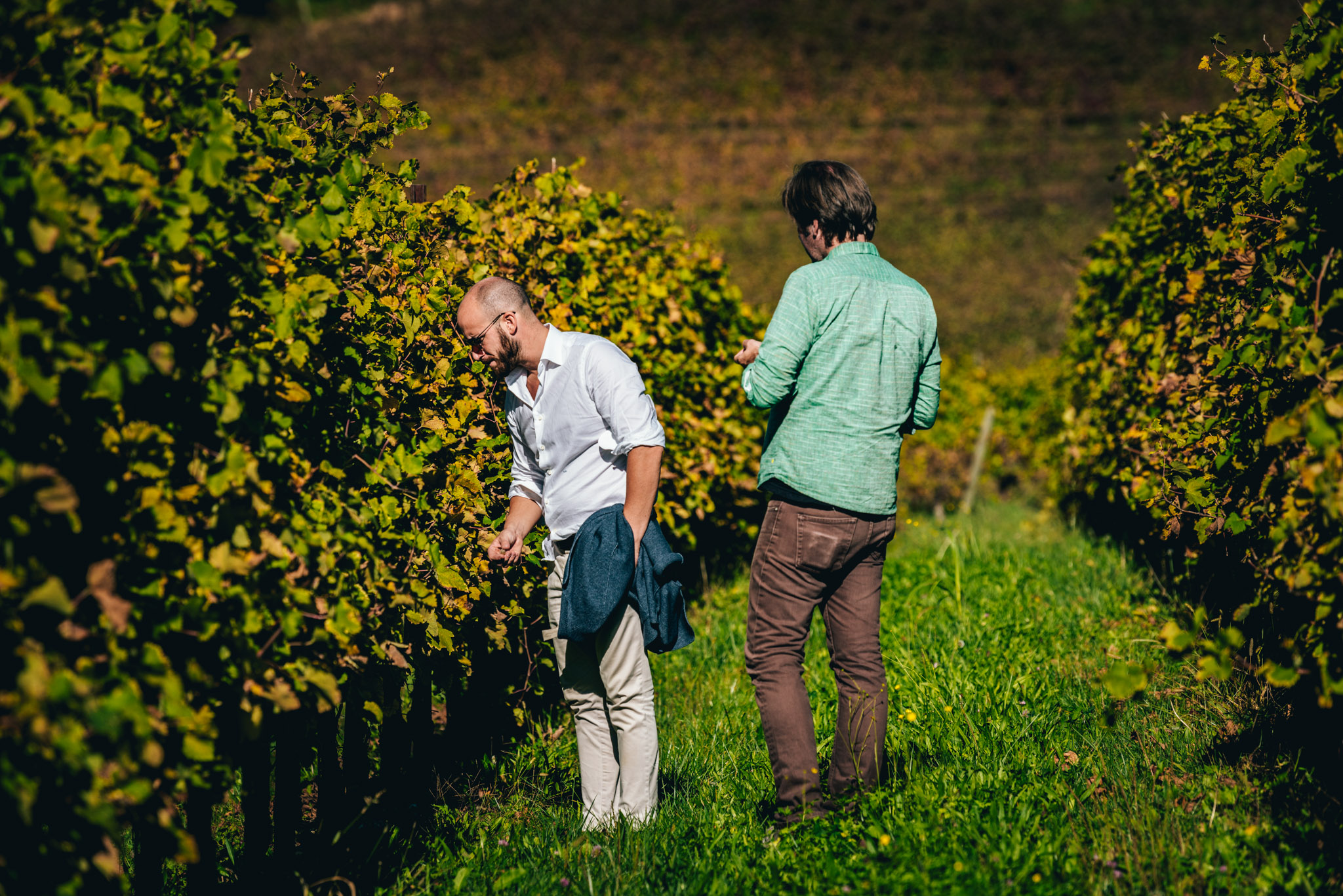
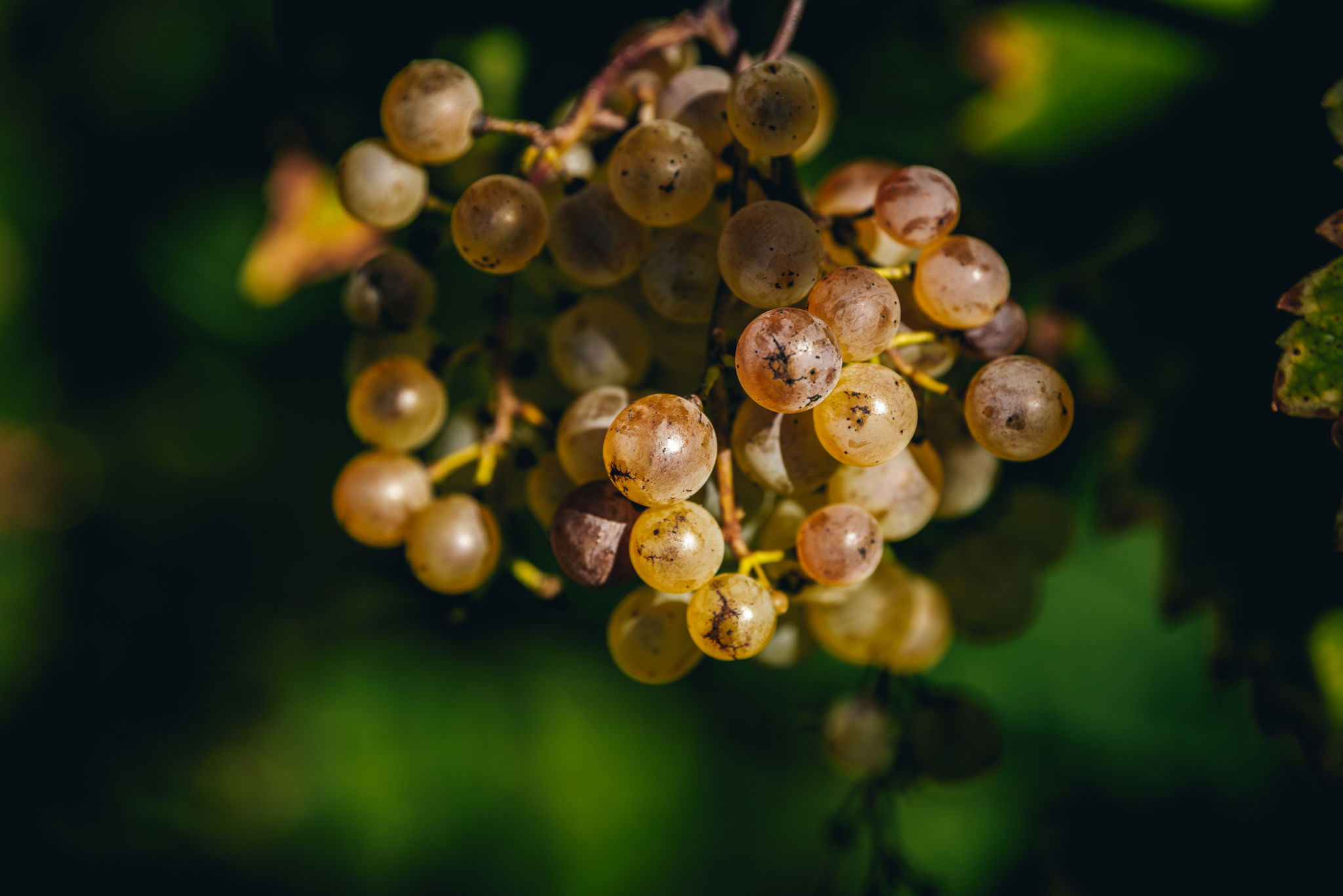

TENUTA Degli Ultimi
Who: Sebastiano Ricci
Where: Conegliano, Treviso (Veneto, Italy)
What grapes: Glera, Wildbacher, Verdiso, Bianchetta
How many bottles: ± 200,000
Key facts: Alpine glacier water seeps out of the rocks and provides natural irrigation to these vineyards in the hills just outside Conegliano
Website: https://www.degliultimi.it
Tenuta Degli Ultimi “Sanguefreddo” Extra Dry Conegliano-Valdobbiadene Prosecco DOCG
Viticulture: Organic
Soil type: Clay with a high level of calcium carbonate
Elevation: 191m, west-facing in the Collalto hills in the northern part of Treviso province
Grapes: Glera
Method of fermentation: The grapes are picked in mid-September. Fermentation occurs at cool temperatures (20 degrees Celsius.) The wine has a fine effervescence (5 atmospheres of pressure) and a lightly fruity (15 g/l residual.)
Apple. Almond. Acacia. Ripe lemon. Ricci’s extra dry is a wonderfully balanced blend of 90% Glera and 10% Bianchetta/Verdiso. I prefer this calm, genial sparkling wine to most non-Champagne bubblies kicking around in our marketplace. Five atmospheres of pressure, 15grams of residual sugar. — JM
Tenuta Degli Ultimi “Biancariva” Brut Conegliano Valdobbiadene Prosecco Superiore DOCG
Viticulture: Organic
Soil type: Clay with a high level of calcium carbonate
Elevation: 191m, west-facing in the Collalto hills in the northern part of Treviso province
Grapes: 88% Glera, 12% Verdiso and Bianchetta
Method of fermentation: Temperature controlled stainless steel fermentation using the Charmat method. 4.5 atmospheres of pressure with around 8 grams of residual sugar and 5.6 g/l of acidity
Pink grapefruit. White flowers. It’s from a single vineyard in the Collalto hills. Two hundred meters above sea level, planted with 88% Glera and 12% Bianchetta/Verdiso. A ghost haunts the ruined tower near this site. Forbidden love, locked away for eternity. We’ve imported multiple vintages of this decidedly not-haunted wine. I’m convinced. Biancariva is the qualitative summit in Sebastiano’s estimable line-up of sparkling wines. — JM
Tenuta Degli Ultimi “Niente” Extra Brut Conegliano Valdobbiadene Prosecco Superiore DOCG Rive di Collalto
Viticulture: Organic
Soil type: Clay with a high level of calcium carbonate
Elevation: 191m, west-facing in the Collalto hills in the northern part of Treviso province
Grapes: Glera
Method of fermentation: Temperature controlled stainless steel fermentation using the Charmat method.
Named in honor of Sebastiano’s mother.
Niente means nothing. “It’s what you have to add to a wine that is already perfect unto itself.” Sebastiano holds this wine in high esteem, and for good reason. It is made from Tenuta degli Ultimi’s oldest vines. Traditional varieties: Verdiso, Bianchetta, and Glera, plus a little bit of Boschera. The latter is a distinct variety hybridised over generations on the small hills of Collalto. The wine spends two years in tank, at very low pressure. It’s the gentlest way to make “brut nature” sparkling wine. Since Niente is dedicated to his mother, and made for his wedding, I’ll leave the last words to Sebastiano. “And when you need Niente/nothing, your free and life is a choice. Niente is nothing but contains everything. Niente is the ultimate minimalism and the finest sophistication. It’s timeless.” Whew. Can’t wait. — JM
Tenuta Degli Ultimi “Ciacola” Brut Treviso Prosecco DOC
Viticulture: Organic
Soil type: Clay with a high level of calcium carbonate
Elevation: 191m, west-facing in the Collalto hills in the northern part of Treviso province
Grapes: Glera
Method of fermentation: Temperature controlled stainless steel fermentation using the Charmat method. 4.5 atmospheres of pressure with around 9 grams of residual sugar.
Tenuta Degli Ultimi “Tramonto” Sparkling Rosé delle Venezie
Viticulture: Organic
Soil type: Clay with a high level of calcium carbonate
Elevation: 191 Meters, west-facing in the Collalto hills in the northern part of Treviso province
Grapes: Wildbacher
Method of fermentation: Temperature controlled stainless steel fermentation using the Charmat method with brief sur lie aging. 4.5 atmospheres of pressure with around 8 grams of residual sugar and 5.5 g/l of acidity
Tramonto means sunset. It’s the perfect time of day to sip Sebastiano Ricci’s Charmat-method sparkling Wildbacher. Preferably with a plate of crudo, minimally sprinkled with sea salt, and drizzled with a fruity Veneto olive oil. Rich sashimi-grade raw fish is a wonderful accompaniment for Tramonto's raspberry, chamomile, and peach aromas. Incidentally, Wildbacher left its native Styria for the Veneto in the 18th century. The name means wild stream. It was planted (and replanted post-phylloxera) mostly around Ricci’s home village of Collalto. Estates in the area make rich red wine with Wildbacher. We’re glad Sebastiano took it in a different direction. — JM
Tenuta Degli Ultimi “Torbido” Glera della Marca Trevigiana IGT
Viticulture: Organic
Soil type: Clay with a high level of calcium carbonate
Elevation: 191m, west-facing in the Collalto hills in the northern part of Treviso province
Grapes: Glera
Method of fermentation: Fermented on yeasts in ceramic capsule
Venice. We were there to taste the vanguard of regional wine. And to discover cicchetti. And to gawk at passersby, and revel in crowds and energy, before those things felt dangerous. I was spellbound by everything around us. It became a memorable night. Above all, Sebastiano wanted to show how col fondo sparkling wines were resurgent in the region’s capital. It’s a message I held onto, in spite of a million sights and smells wrestling for memory space. This wine hews to the “everything old is new again” mantra. It is naturally refermented in the bottle. It has lower atmospheres of pressure, and is way drier than most bubbly. Torbido is truly food-friendly. Bring on the cicchetti! — JM
Ultimi is more of a worldview or an experience than a place. Of course the place is Conegliano, and Sebastian Ricci and I would have connected to the land a little more, but I arrived in the late afternoon and the land was more shadow than light. His home is a sprawling hillside compound shared with other family members, its festive pink exterior walls appropriate for a residence inhabited by a producer of exuberant, convivial wines. The town looks small and affluent, dotted with architectural detail, well-maintained old stone buildings, active retail areas. My visit coincided with epiphany, holiday decorations cast silver and blue light on roads and meeting places in the town center.
Sebastiano was the worse for wear. He’d just suffered a serious shoulder injury. Professional advice is total immobility for his right arm, or risk dire long-term consequences. It does not take long with Sebastiano to realize this advice will run aground in reality. He’s always on the move, a man of ceaseless energy and information. Factual, thoughtful, always in gear. I can’t picture Sebastiano slowing down. For example, for visual emphasis or the conditions that shape Prosecco from Conegliano, Sebastiano enlists his brother (a winemaker at the property) to drive us to the ski resort of Cortina, high in the mountains. For drinks. Even in darkness the landscape is dramatic. A full moon lights white clouds that roll over cliff faces massive enough to shape most of the horizon, pitch black geometric blocks. Everyone from the Veneto is in Cortina to ski it seems, and by nightfall they’ve descended to bars serving apertivos and remarkably tasty Prosciutto di San Daniele. The town has been in a couple Bond films (one Connery, one Craig) and classic alpine motifs are abundant. Wolf-like dogs rest like expensive white rugs under cocktail tables, clusters of type-A vacationers wander around in designer winter sports wear and BMW X-5s.
We leave town for a brisk walk up a mountain road, to see the city sparkling. After our bones are chilled we head out for a more remote place, for Il Capriolo, a restaurant with archetypal old-school alpine aesthetics, and a Michelin star where we dine in the cellar, a private table surrounded by piles of the top-tier bottles jet-setting sky buffs probably drink on a Tuesday. The meal has memorable moments, white truffles show up on an early course, and an elderflower and hay sorbet is unreal, perfect. The sommelier darting in occasionally seems harried, a little dishevelled.
Ultimi is a winery in motion. They use three different oenologists (and three different bottling lines) to tinker with wines for the future. Oenologist Maurizio Donadi is creating some particularly compelling wine for the estate, the torbido Prosecco that he crafted is easily the most serious wine in development. When wines aren’t serious at Ultimi they are exceptionally pure, focused, bright and enjoyable. They utilize old vines grown on an interesting mineral mix of glacial deposits to make wine like this, dry Proseccos with no additions/adulterations. The template for how Prosecco can be a festive wine that contains real quality is being refined by Sebastiano and his people.
I think he has about 24 hectares now. Some of it forest. The oldest vines, Merlot, are just over 60 years old. The youngest, Glera, 15. Further up the hill, into the forest, Sebastiano shows me where mountain water drips out of the rock. Between that, the exposure and the quality of the rocky mud stuck to our boots it’s not hard to understand why this place is the right place for these grape vines.
On the way back down, the view on foggy Conegliano is quite spectacular. I get to see the wine making facility which is big, modern and shared with Sebastiano’s brother’s label. Tenuta Degli Ultimi is ready for the future!






